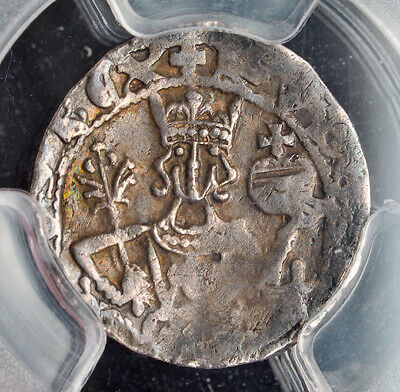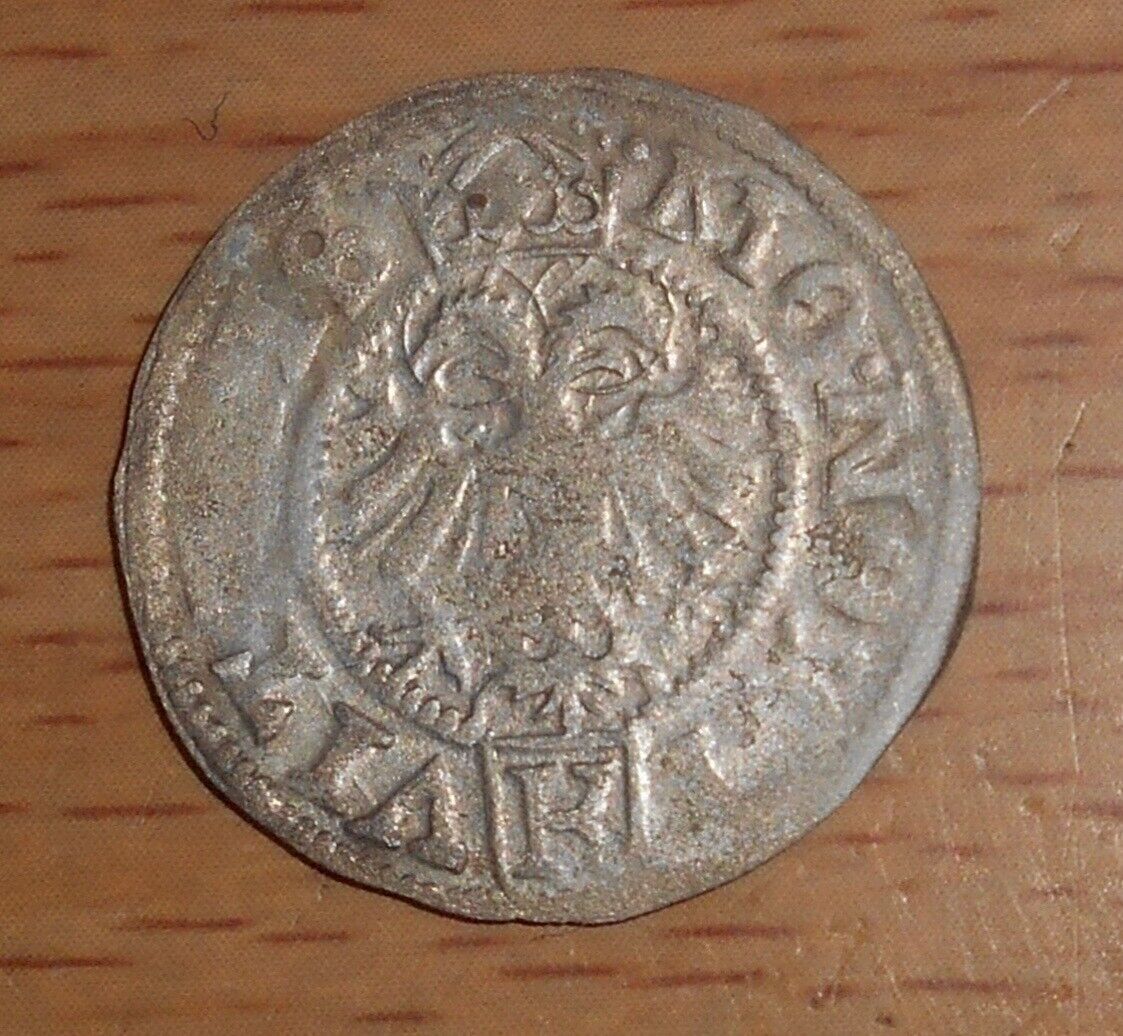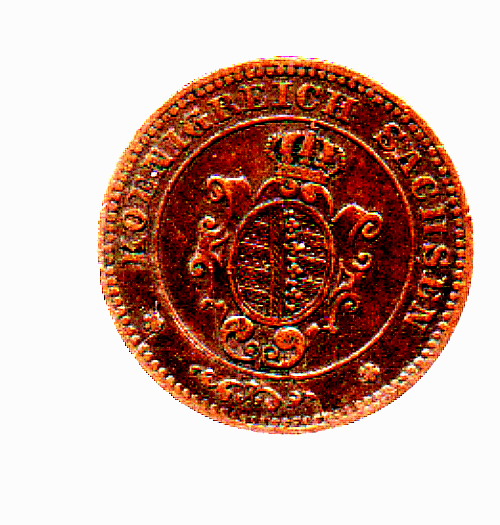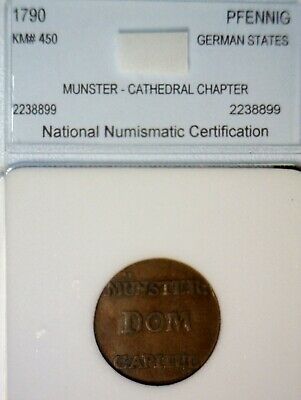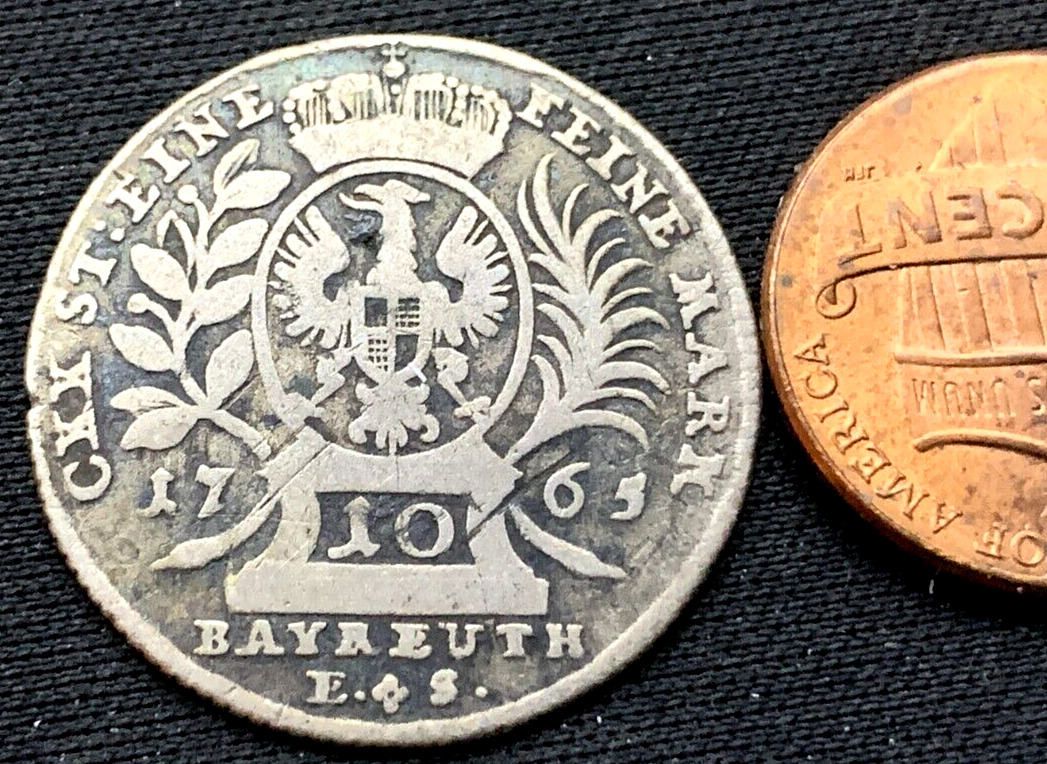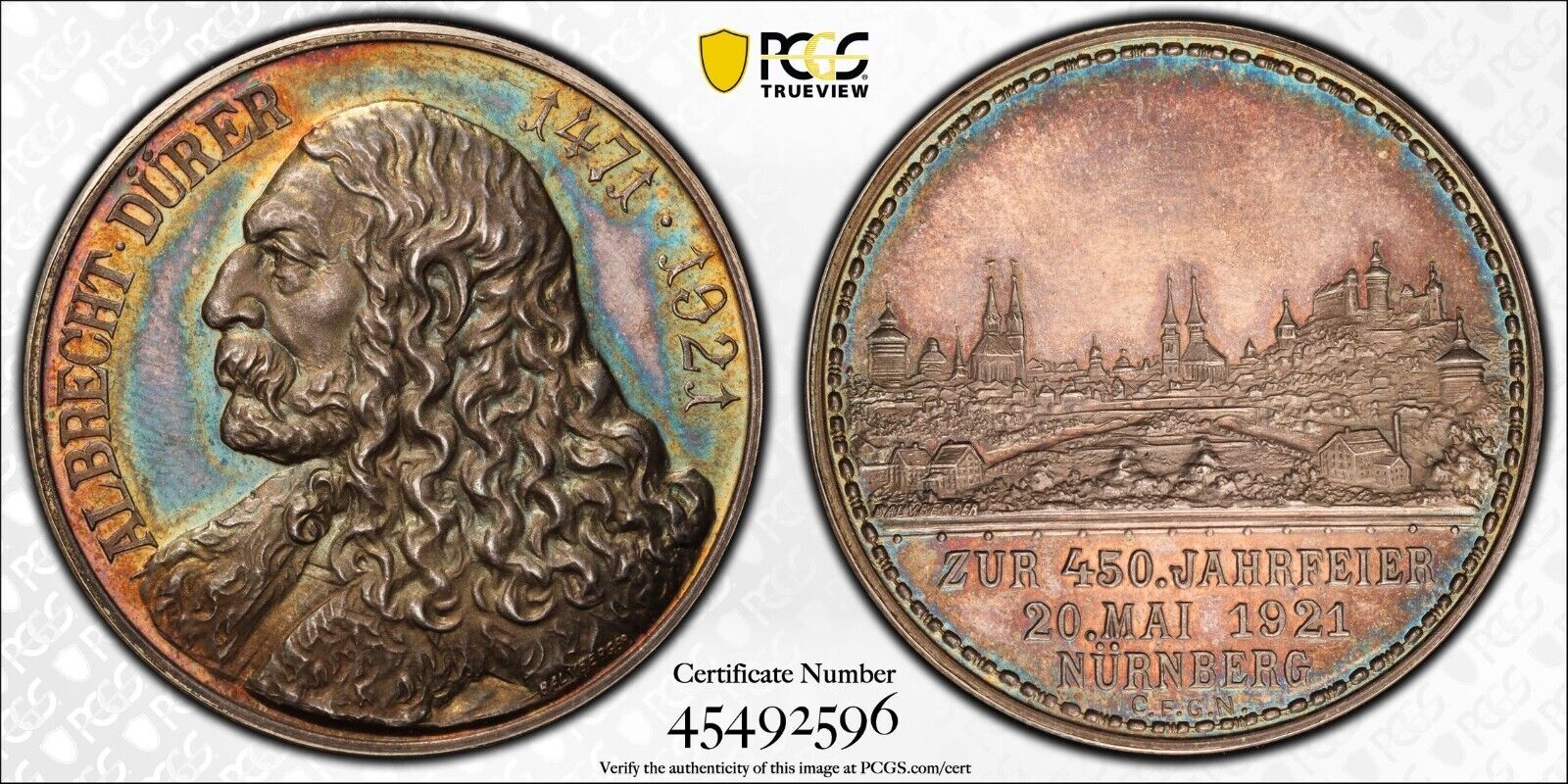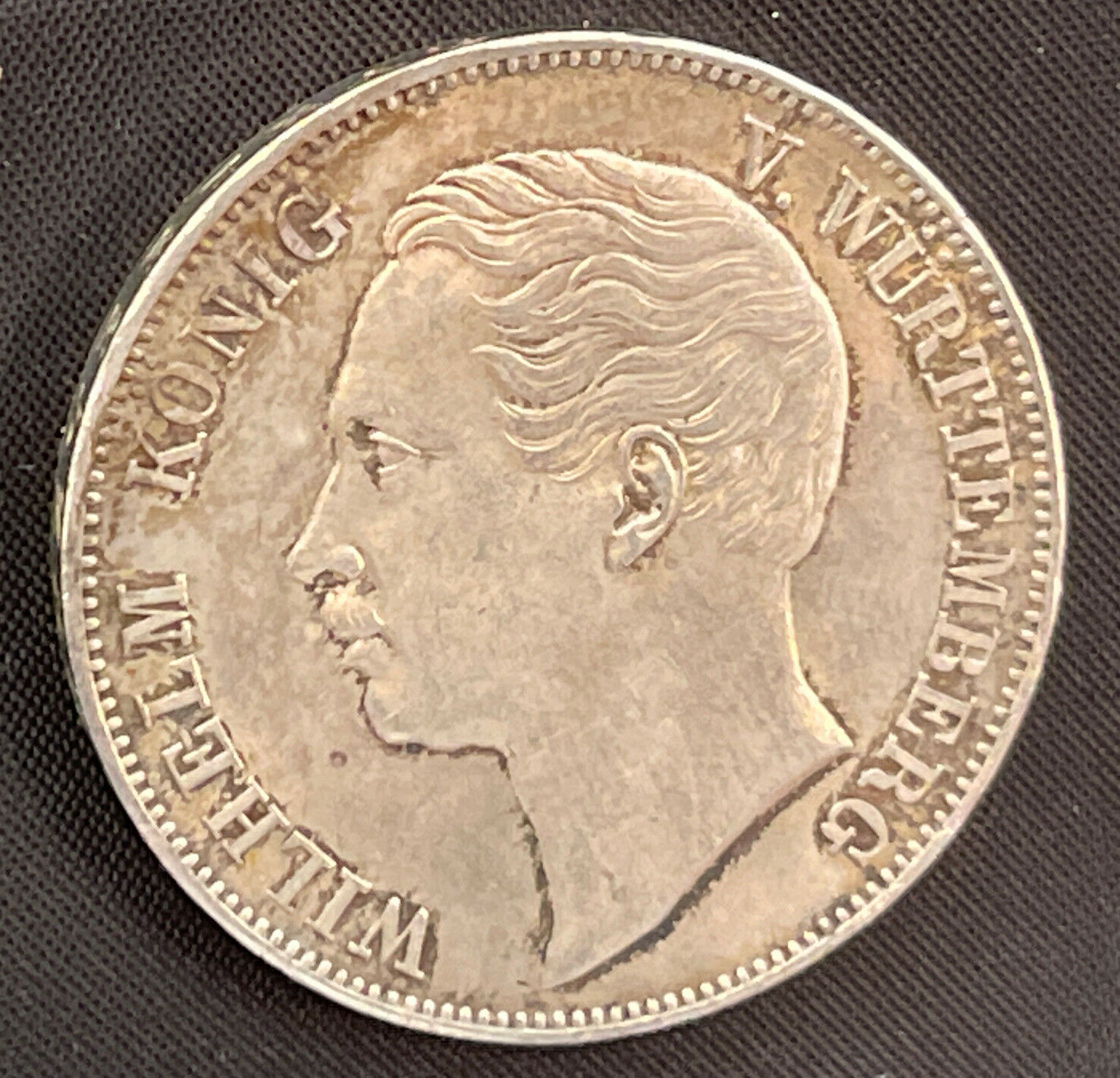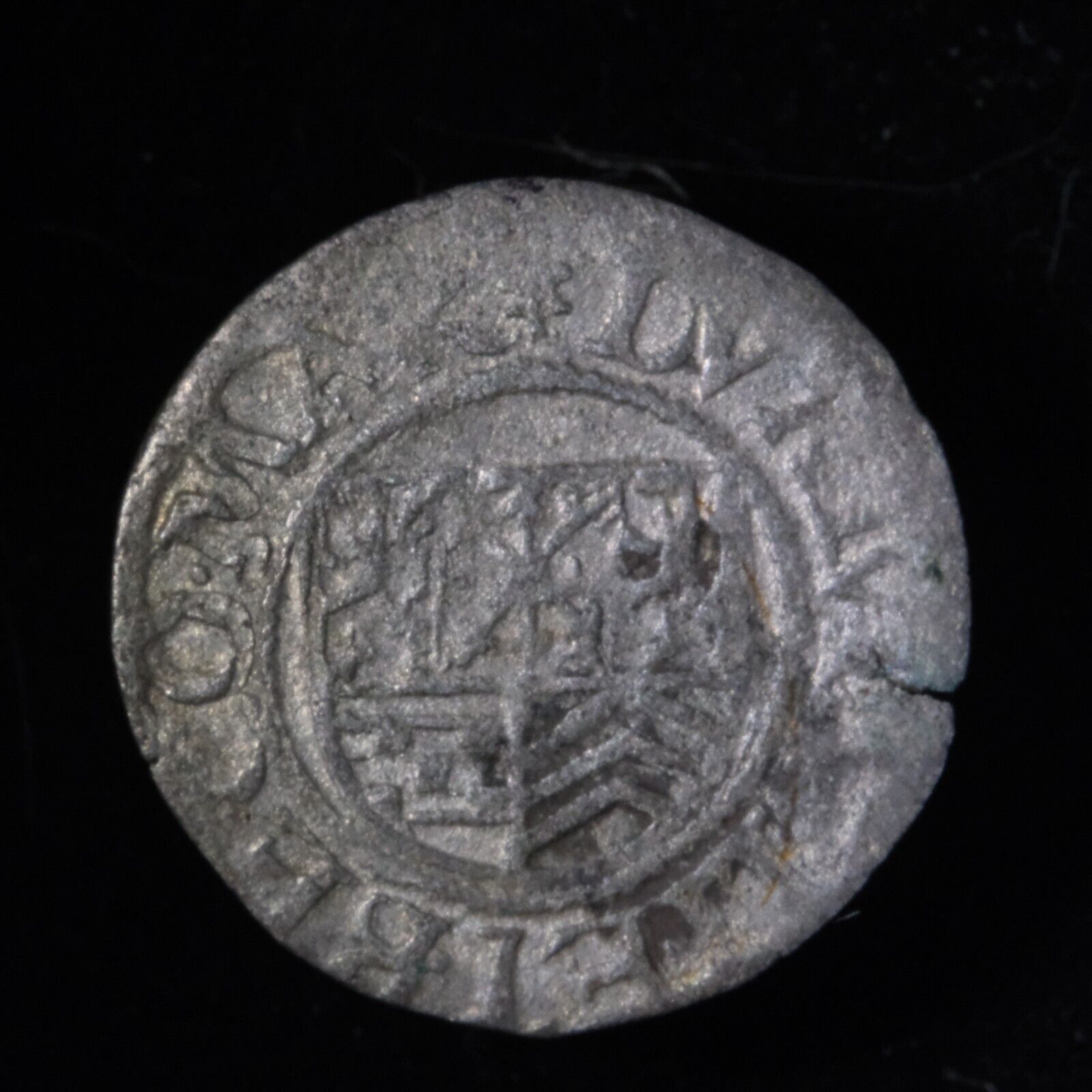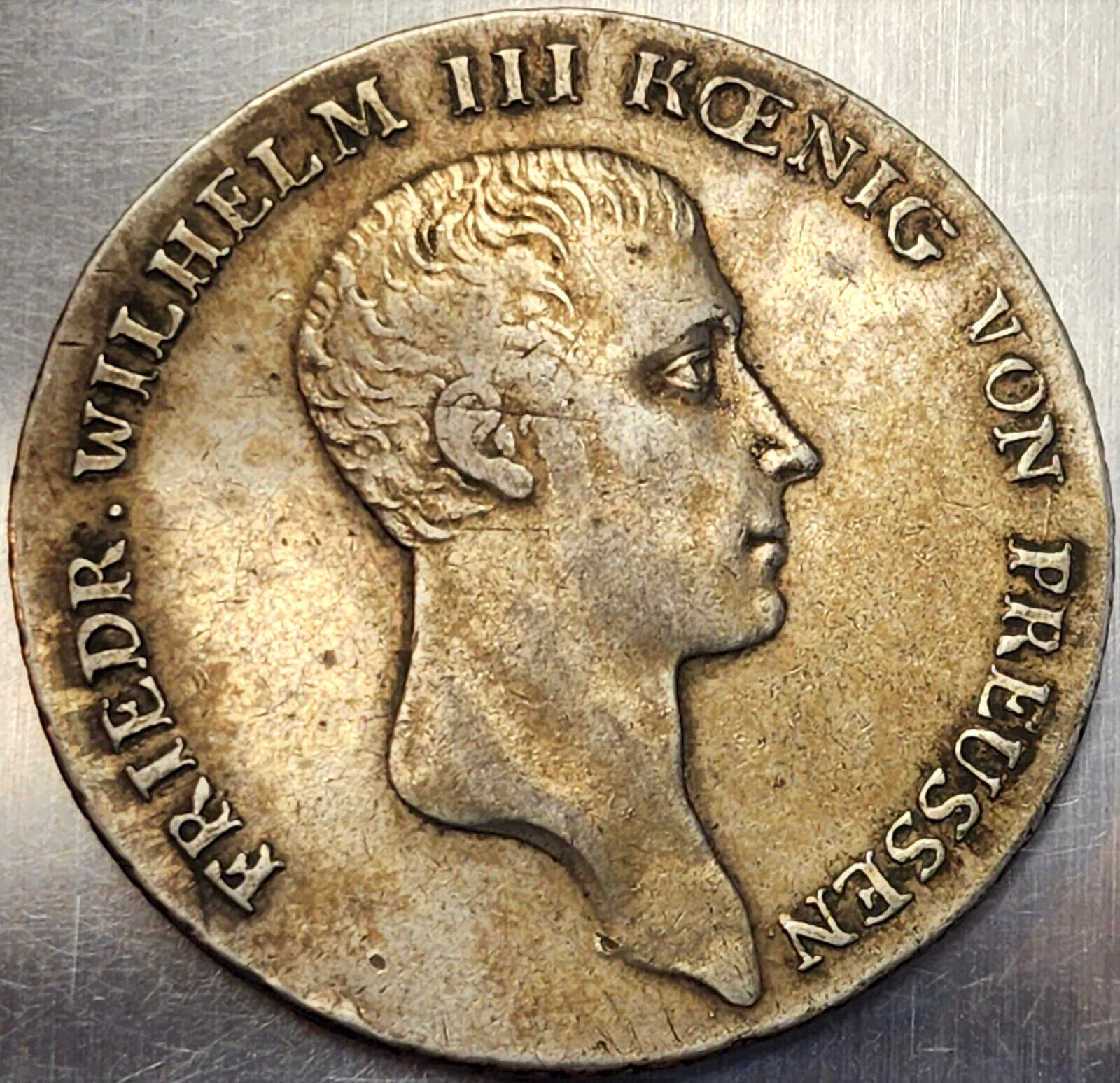-40%
1273, German Kingdom, Dortmund (City), Rudolf I. Silver Pfennig Coin. PCGS AU53!
$ 174.58
- Description
- Size Guide
Description
1273, German Kingdom, Dortmund (City), Rudolf I. Silver Pfennig Coin. PCGS AU53!Mint Place: Dortmund
Mint Period: 1273-1291
Denomination: Pfennig
Reference: Berghaus 82. R!
Condition:
Certified and graded by PCGS as AU-53!
Weight: 1.37gm
Material: Silver
Obverse:
Crowned
enthroned
figure
of Rud
olf I of Habsburg
facing
, holding scepter and cross-topped orb.
Legend: + RVD... ... REX
Reverse:
Crowned facing bearded bust of Saint Reinold flanked by small crosses. All wthin triangle. Legend in outer fields.
Legend: TREM / ONIA / CIVI
Saint Reinold
was a Benedictine monk who lived in the 10th century.
Supposedly a direct descendant of Charlemagne
, and the fourth son mentioned in the romantic poem Duke Aymon, by William Caxton. The poem is Caxton's translation of the long French Chanson de Geste, Les Quatre Fils Aymon (The Four Sons of Aymon), where Renaud de Montauban dies in an almost identical manner. He began his religious life by entering the Benedictine monastery of Pantaleon in Cologne, Germany, where he was appointed head of a building project occurring in the abbey. He often joined the stonemasons in their work, at times surpassing them. This led to the unsavoury event of his murder at the hands of the same stonemasons he worked with. Reinold was beaten to death with hammers and his body deposited into a pool near the Rhine. His body was later found through divine means, leading to the attribution of Reinold as the
Patron of Stonemasons.
The terms
Kingdom of Germany
or
German Kingdom
(Latin: regnum Teutonicorum "Kingdom of the Germans", regnum Teutonicum "German Kingdom", regnum Alamanie) denote the mostly Germanic-speaking Eastern Frankish kingdom, which was formed by the Treaty of Verdun in 843, especially after the kingship passed from Frankish kings to the Saxon Ottonian dynasty in 919. The king was elected, initially by the rulers of the stem duchies, who generally chose one of their own. After 962, when Otto I was crowned emperor, East Francia formed the bulk of the Holy Roman Empire, which also included the Kingdom of Italy and, after 1032, the Kingdom of Burgundy.
Like medieval England and medieval France, medieval Germany consolidated from a conglomerate of smaller tribes, nations or polities by the High Middle Ages. The term rex teutonicorum ("king of the Germans") first came into use in Italy around the year 1000. It was popularized by the chancery of Pope Gregory VII during the Investiture Controversy (late 11th century), perhaps as a polemical tool against Emperor Henry IV. In the twelfth century, in order to stress the imperial and transnational character of their office, the emperors began to employ the title rex Romanorum (king of the Romans) on their election.
The Archbishop of Mainz was ex officio arch-chancellor of Germany, as his colleagues the Archbishop of Cologne and Archbishop of Trier were, respectively, arch-chancellors of Italy and Burgundy. These titles continued in use until the end of the empire, but only the German chancery actually existed.
Distinct titulature for Germany, Italy and Burgundy, which traditionally had their own courts, laws, and chanceries, gradually dropped from use as the King/Emperor's influence outside of Germany waned and the German kingdom came to be identified with the Holy Roman Empire.
Reigns were either dated from the day a ruler was elected king (Philip of Swabia, Rudolf of Habsburg) or crowned king (Otto IV, Henry VII, Louis IV, Charles IV). The election day became the starting date permanently with Sigismund. Throughout the Middle Ages, the King of Germany was known as "King of the Romans" from his election as king until the Pope crowned him Emperor in Rome.
Authenticity unconditionally guaranteed.
Bid with confidence!
Rudolf I
(1 May 1218 – 15 July 1291) was the first king of Germany from the House of Habsburg. The first of the count-kings of Germany, he reigned from 1273 until his death.
Rudolf's election marked the end of the Great Interregnum which had begun after the death of the Hohenstaufen Emperor Frederick II in 1250. Originally a Swabian count, he was the first Habsburg to acquire the duchies of Austria and Styria in opposition to his mighty rival, the Přemyslid king Ottokar II of Bohemia, whom he defeated in the 1278 Battle on the Marchfeld. The territories remained under Habsburg rule for more than 600 years, forming the core of the Habsburg Monarchy and the present-day country of Austria. Rudolf played a vital role in raising the comital House of Habsburg to the rank of Imperial princes.
Only 1$ shipping for each additional item purchased!
